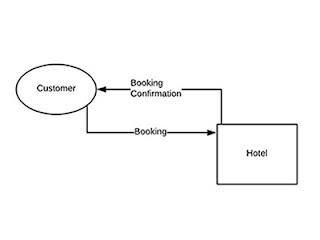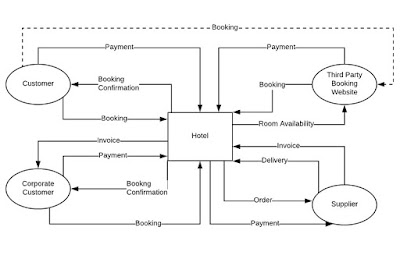Stakeholder Identification – An Example.
A few years ago I worked on a proposal to work with a major UK retailer to provide Business Analysis training and consultancy for their systems development teams. At the time I was working for a large UK consultancy firm.
They have over 600 high street stores across the UK and over 600 stores at airports, train stations, hospitals and motorway services. They are one of the UK's leading retail groups, a well-respected household name with a history going back to the late eighteenth century.
They are sometimes regarded as a bookseller and newsagent and this is a big part of their core business. But one thing that distinguishes them from other similar companies is the range of things that they offer in their stores.
Their product range includes:
• Books.
• Newspapers and Magazines.
• Stationery.
• Greetings Cards and Gifts.
• Toys and Games.
• Entertainment – Music and Film.
I did some research this to better understand their business and requirements.
In particular I wanted to learn more about 2 key groups of stakeholders – their staff and customers.
I took a look at printed and online sources – background research.
I also visited a couple of their stores as a customer - observation.
So when we got to meet with them for the first time we were better placed to connect with them, talk about their business and how we could help with business analysis.
One interesting thing – that I discovered as part of this. The range of product offerings mentioned above might be seen as a major strength, by both staff and customers.
But in my view, it could also be seen as a potential weakness. Some specialist retailers – who focussed just on books (none of the other products) might have an edge. One category of customers, could be called “book lovers”, some of whom might prefer these competitors because of their wider range of books for sale and their focussed expertise of their staff. This was an interesting insight.
Stakeholder identification could help them to identify more detail. So maybe not just Customers – but Customers (Book Lovers), Customers (General), Customers (Newspapers) …… and so on. Each with possibly different requirements. Staff could be broken down as well – including maybe General Staff and Specialist Booksellers.
Identifying stakeholders at the right level of details means a better understanding of requirements –
and therefore better systems and better solutions to business problems.
In this case - one (of many) possible business improvements might be to attract more book buying customers. For example, by providing specialist training to staff in book-selling. Or by enhancing IT systems to provide better information about available books.
In this case - one (of many) possible business improvements might be to attract more book buying customers. For example, by providing specialist training to staff in book-selling. Or by enhancing IT systems to provide better information about available books.
The mind map diagram below shows some of the possible stakeholders for the
UK retailer.
It is not a complete model -
but would serve as a useful start point for further investigation and analysis.
Here are my other blog posts on this topic - covering some of the fact finding techniques that you might use to analyse Stakeholders and how to apply them:
Stakeholder Analysis - Notes - Identifying Stakeholders - Part 1
Stakeholder Analysis - Notes - Identifying Stakeholders - Part 2
If you would like to learn more about this subject - look at my online course - on Udemy - Stakeholder Analysis.
Stakeholder Analysis - Notes - Identifying Stakeholders - Part 1
Stakeholder Analysis - Notes - Identifying Stakeholders - Part 2
If you would like to learn more about this subject - look at my online course - on Udemy - Stakeholder Analysis.
This highly practical course covers the key concepts and techniques for Stakeholder Analysis.
It also includes a detailed practical case study that you can work through as you progress through the course. This will enable to to see how the techniques described apply in practice - and to apply them yourself to real business project situations.
For more information - use the link below:
Image credit - Wikimedia Commons.
Licensed under the Creative Commons Attribution-Share Alike 2.0 Generic license.
















